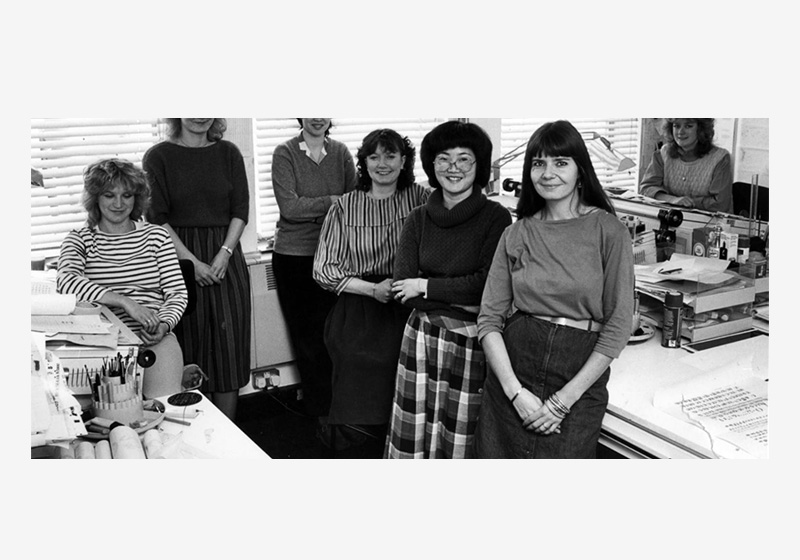Table of Contents
Women in Type
Women played a key role in the development of typography throughout the 20th century, as this research project shows.
Typography is a vital element of the textual representation of languages and the literacy of communities. But aside from this utilitarian aspect, this tool for visual communication also allows texts to have a dimension beyond their content. There are typefaces that can produce certain sensations or even transport us to other places.
Although the initial steps to break the traditional typographic moulds were taken in the late 19th century, it was not until the beginning of the 20th century that the foundations of modern typography were laid. Avant-garde movements such as Futurism, Dadaism and Constructivism explored the possibilities of typography as a tool for expression, and became a benchmark for designers in later decades. Publicity led to a growing interest in the subject.

It is often assumed that typefaces are the work of a single designer, when in fact they are the result of a series of processes involving many people, as in most industries. And though many of their names are not known to us, women were key contributors to the design process of many renowned typefaces that emerged throughout the 20th century. Bringing attention to their work is what Women in Type is all about.
Women in type drawing offices
The project is the result of research by the Department of Typography & Graphic Communication at the University of Reading in England, conducted between March 2018 and November 2021 and led by Professor Fiona Ross together with Alice Savoie, principal researcher, and Helena Lekka, postdoctoral assistant.
The research shows that several type manufacturers in Europe, such as Deberny & Peignot (France), Simoncini (Italy), Monotype and Linotype (UK) and Berthold (Germany), and most likely in the United States, employed women in type drawing offices, also known as type development departments, at the time.

The core of the work carried out by these departments was to convert an original type design idea into a functional typeface. This included extending the character sets (punctuation, accents, small caps) and also adapting them to variants (bold, italic, condensed). And their work was not only limited to Latin script – they also produced typefaces for Arabic and various Asian alphabets.
As for the skills required, the researchers explain on the project’s website that they needed to have a logical mind, good drawing skills and a keen sense of proportions.
A key role unrecognised by the design industry
There are several reasons why these companies used to hire women for the development and production of typefaces. One of the main ones is because their wages were substantially lower than those of men. They were usually young, unmarried women who were at an age when they could get “permission” to do paid work “outside the home” until the moment came for them to get married and assume responsibility for childcare and housework. This meant that worker turnover was incredibly high, which contributed to keeping wages low and discouraging any development of their skills.

The history of type design has overlooked the decisive role of these women in the growth of the industry for this very reason. But the researchers also note that many of the women they have spoken to do not seem to recognise the value of their own contributions. They hope that future studies will put an end to the invisibility of these people in contemporary narratives of design history.
The project’s website has compiled textual and photographic material.
The findings by Women in Type can be explored through their interactive website, which features articles from various fields of study. Extensive photographic material documenting the work of these women in type design offices, especially Monotype and Linotype, can also be found. There is also an extensive bibliographic selection covering topics such as the history of type design and the role of women in the industry.

